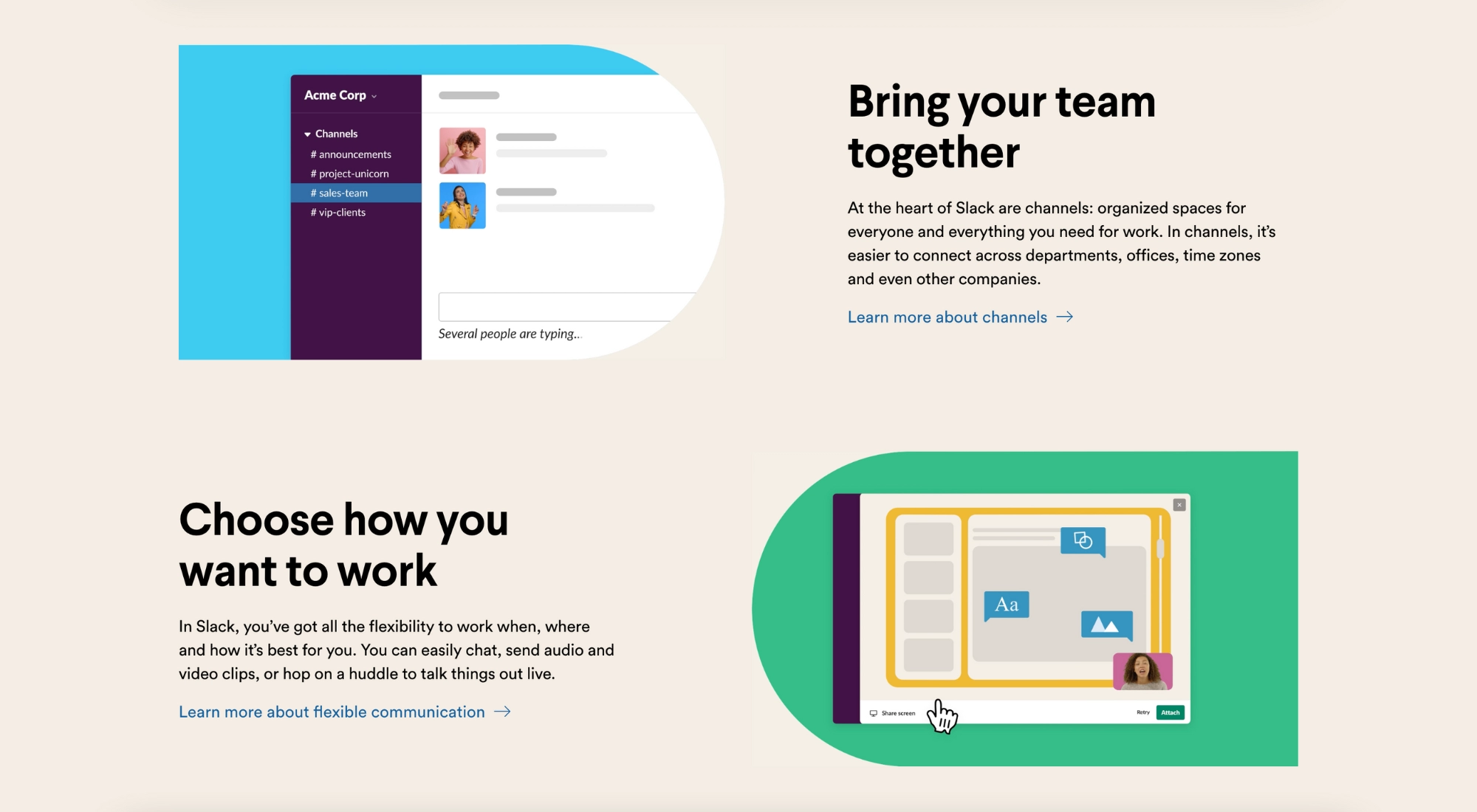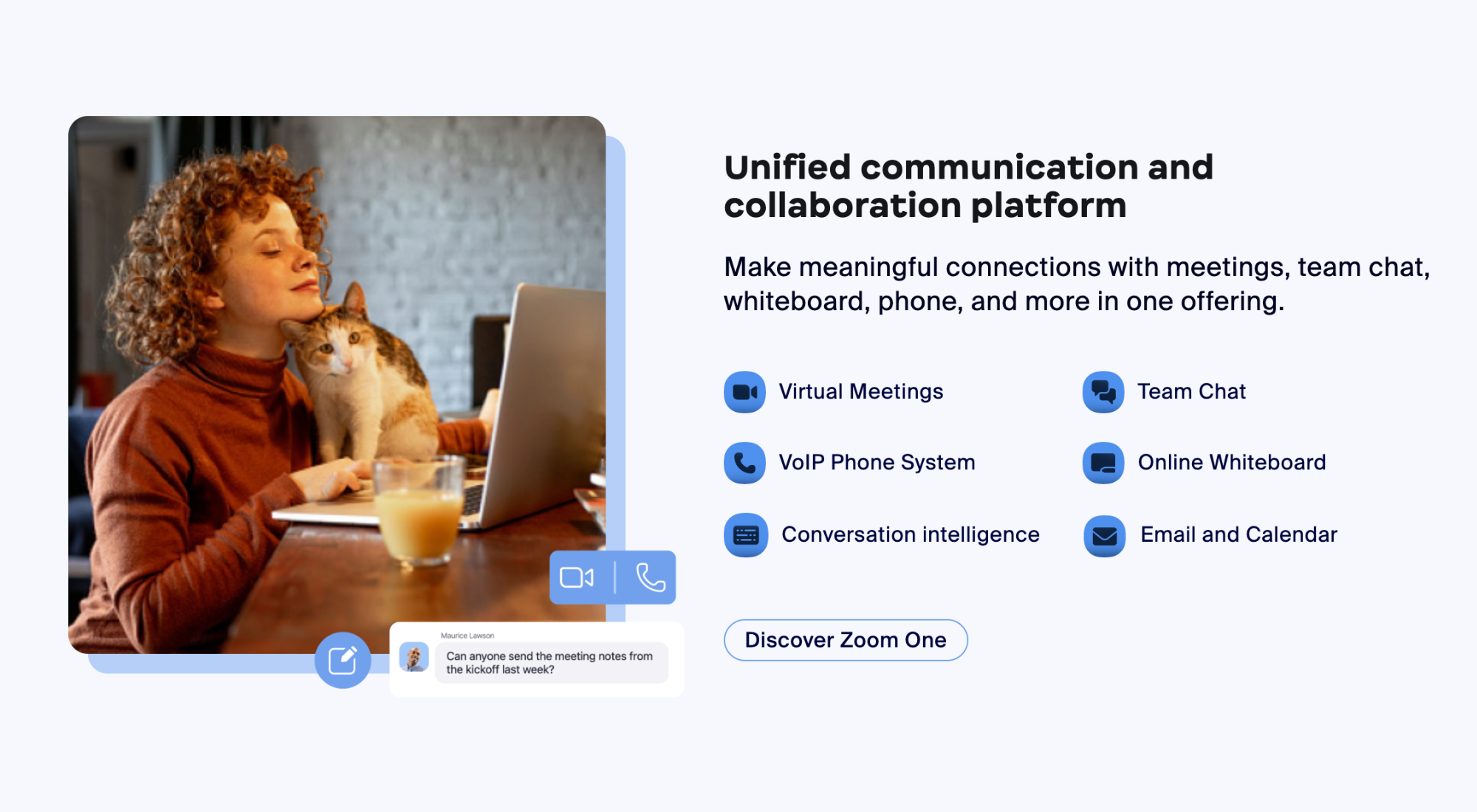HR Writer & Editor
Best Company Culture Tools for a Happier, More Engaged Workforce in 2024

5 min read
Published: Jan 5, 2023
Revised on: Mar 1, 2024
- Assembly
- Easy to use and intuitive interface. Many reviews mentioned Assembly is simple, easy to navigate, and user-friendly.
- Good customer support. Reviews mentioned Assembly's support team is responsive in resolving issues.
- Rewards redemption process is smooth. Users liked the gift card and other reward options that can be redeemed with points.
- Integrates well with Slack and Microsoft Teams. The integration makes giving recognition quick and seamless.
- Good for employee recognition and engagement. Reviews highlighted Assembly's peer-to-peer recognition features that help boost employee morale.
- Trello
- Intuitive and easy to use interface. Many reviews praised how simple Trello is to get started with and how the drag-and-drop functionality makes managing tasks incredibly convenient.
- Flexibility and customization. Users like that they can customize workflows, boards, lists, cards, labels, etc. to suit their specific needs. Trello can be adapted for personal or business use.
- Collaboration features. Reviews highlighted the ability to assign tasks, share boards, leave comments, and get notifications as key features that enable teams to work together seamlessly.
- Integration with other apps. The ability to connect Trello with tools like Slack, Google Drive, Dropbox, etc. enhances workflows and productivity.
- Free plan with robust features. Even the free version provides enough functionality for many users' needs, especially smaller teams and personal use.
- Asana
- User-friendly and intuitive interface
- Powerful features for task management and project tracking
- Enables easy collaboration through task assignment, file sharing, and real-time communication
- Customizable workflows and views like Kanban boards and Gantt charts
- Integrations with other tools like Slack, Google Drive, Dropbox etc.
- Slack
- Easy to use interface and intuitive navigation. Many reviews mentioned Slack is simple to get started with and user-friendly.
- Facilitates team communication and collaboration. Slack provides channels, threads, and direct messaging for organizing conversations and working together.
- Integration capabilities. Slack seamlessly integrates with many apps like Google Drive, Trello, Zoom etc.
- Customizable notification settings. Users can customize notifications to control interruptions.
- Powerful search function. Slack's search allows quickly finding messages, files, and conversations.
- Zoom
- Easy to use and intuitive interface - Many reviewers mentioned Zoom is very easy to use, even for those less tech-savvy. The interface is clean, simple, and intuitive.
- High quality audio/video - Reviewers consistently praised the high-quality video and audio provided by Zoom, resulting in smooth, clear communication.
- Useful features like screen sharing, chat, recording - Features like screen sharing, chat, breakout rooms, and the ability to record meetings make Zoom useful for collaboration and engagement.
- Reliable performance - Reviewers said Zoom provides a reliable conferencing experience, even on slower networks. It rarely crashes or lags.
- Widely used/cross-platform - Zoom works across devices and platforms, and its widespread use makes it easy when inviting others to meetings.
Cultivating a thriving company culture isn't just a trend—it's a strategic imperative for fostering a happier and more engaged workforce. The significance of cohesive team dynamics, employee satisfaction, and organizational values has never been more pronounced. The right company culture tools serve as catalysts, empowering businesses to nurture an environment where collaboration flourishes, innovation thrives, and employees feel valued. This comprehensive guide explores the top company culture tools available in 2024, aimed at enhancing workplace culture, amplifying employee engagement, and ultimately driving success within modern organizations.
Why Does Company Culture Matter?
Company culture is the foundation on which your business is built. It determines how employees feel, how customers perceive you, and how your brand is perceived by society at large. A positive company culture can help attract and retain top talent, improve employee retention rates, increase productivity and efficiency, and even drive revenue growth.
What Are Tips for Building a Highly-Engaged Company Culture?
In a world where employees are more transient and harder to retain, it's more important than ever to create a company culture that people can't help but want to be a part of. Here are some tips for building a highly-engaged company culture:
- Encourage Open Communication: If people feel comfortable sharing their ideas with others, it helps strengthen relationships and builds trust within the organization. This kind of transparency helps employees feel like they're part of something bigger than themselves — which is especially important if you want people to buy into your vision for the future.
- Appreciate Employees’ Productivity and Commitment: The psychology behind this is that when employees feel appreciated, they’ll do all they can to experience that feeling again. In other words, employees thrive when they get positive recognition from the management for the time and effort they put into carrying out their tasks. A simple note, a thank-you gift, or even just a shout-out at meetings can go a long way in boosting morale.
- Offer Opportunities for Growth: When employees know that there are opportunities for growth within a company, they are more likely to feel valued and engaged. This means offering training and development programs, promotions, and raises based on performance rather than tenure. It also means providing opportunities for advancement and career growth within your organization through cross-training or internal job postings.
- Encourage Employee Involvement in Decision-making Processes: Employees want to feel that they are a part of the company, so allow them to be. If you make decisions without asking for their opinion or input, they will feel like they don't have any power. This can result in lower morale and poorer productivity.When you ask for employees' opinions, it shows respect for their experience and helps them feel more connected to the business. When people feel respected and valued by their employers, they are more likely to stay with the company long-term.
- Periodically Revisit Your Company’s Core Values: You don’t want employees to feel that their job is just about getting through the day, but instead, feel like they are working toward something bigger than themselves. One way to do this is by periodically revisiting your company’s core values and making sure they align with what you want your company culture to be.
- Don't Overlook Diversity Efforts: A diverse team brings different perspectives, experiences, and skill sets to the table that can help strengthen your company's overall performance in many areas — including customer service, innovation, and creativity. Encourage diversity by ensuring an inclusive hiring process that doesn't discriminate against any candidates based on gender identity, race or ethnicity, age, or disability status.
- Get Everyone Involved in Building Your Culture: You can’t expect employees to buy into the company’s culture if they don’t feel like they helped build it. Start by soliciting feedback from employees on what they believe makes up your company’s culture. Then, get everyone involved in developing and implementing new initiatives to improve your culture based on those insights.
How Do You Create a More Engaging Workplace?
Creating an engaging workplace involves various elements that foster a positive and productive environment. Every workplace is unique, so it's essential to tailor strategies to fit your company's culture and the needs of your employees. Regularly assess the effectiveness of the initiatives and adapt them based on feedback and evolving needs.
- Clear Communication
- Recognition and Appreciation
- Opportunities for Growth
- Work-Life Balance
- Collaborative Environment
- Meaningful Work
- Empowerment and Autonomy
- Physical and Mental Well-being
- Feedback and Improvement
- Fun and Social Activities
What Is the Most Important Aspect of a Company's Culture?
The most crucial aspect of a company's culture is its foundation of values. Values shape behaviors, decisions, and interactions within an organization. When everyone aligns with shared values, it creates a cohesive environment where employees feel connected to a common purpose. These values guide how employees work, collaborate, and make decisions, influencing the overall atmosphere, employee satisfaction, and the company's reputation.
Best Company Culture Tools
In this article, we will share tips for building and maintaining a highly engaged company culture. We’ll also explore tools that can increase efficiency in communication, people management, and productivity, the pillars of employee engagement.
One efficient way to manage projects is to break them up into workflows. Assembly effortlessly does that for you. Each workflow consists of smaller steps that help you and your team complete tasks faster. There is a variety of ready-to-use, customizable templates to pick from. Giving team members and stakeholders total visibility over a project fosters collaboration, transparency, and trust. With Assembly’s Project Feed template, you can do just that. This workflow lets everyone ask questions, leave comments and make suggestions on project processes. It ensures that everyone is on the same page at all times. Effective project management requires looking into what worked during a project and what didn’t. Assembly’s Team Retrospective template helps you set up a record of feedback shared by the team for each project. You can always pull up the record to refer to a suggestion or comment when necessary.
Pros
- Easy to use and intuitive interface. Many reviews mentioned Assembly is simple, easy to navigate, and user-friendly.
- Good customer support. Reviews mentioned Assembly's support team is responsive in resolving issues.
- Rewards redemption process is smooth. Users liked the gift card and other reward options that can be redeemed with points.
- Integrates well with Slack and Microsoft Teams. The integration makes giving recognition quick and seamless.
- Good for employee recognition and engagement. Reviews highlighted Assembly's peer-to-peer recognition features that help boost employee morale.
Cons
- Limitations in analytics and reporting features. Some reviews wanted more detailed analytics and user statistics.
- Creating flows and automations can be tricky. Reviews noted workflows and automations are sometimes hard to setup.
- Limited customization options for recognitions. Users wanted more ways to customize recognitions with images/GIFs.
- Lack of mobile apps earlier on. Reviews mentioned lack of mobile apps made it hard to use when not by a computer.
- Confusion due to branding changes. Reviews noted frequent name changes of the reward units was confusing initially.
Trello
Trello is a top online project management tool that uses lists, boards, and cards to create tasks for team members. It allows users to collaborate within the cards, leave comments, and share files. Trello is easy-to-use and perfect for smaller teams who manage a few projects simultaneously. With the paid plans, you get a variety of integrations, automation options, and priority support.
Pros
- Intuitive and easy to use interface. Many reviews praised how simple Trello is to get started with and how the drag-and-drop functionality makes managing tasks incredibly convenient.
- Flexibility and customization. Users like that they can customize workflows, boards, lists, cards, labels, etc. to suit their specific needs. Trello can be adapted for personal or business use.
- Collaboration features. Reviews highlighted the ability to assign tasks, share boards, leave comments, and get notifications as key features that enable teams to work together seamlessly.
- Integration with other apps. The ability to connect Trello with tools like Slack, Google Drive, Dropbox, etc. enhances workflows and productivity.
- Free plan with robust features. Even the free version provides enough functionality for many users' needs, especially smaller teams and personal use.
Cons
- Limitations of free plan. The free plan has restrictions like a cap on the number of boards, attachments size, etc. which can be limiting for larger teams.
- Steep learning curve initially. Some users found Trello confusing at first and it took time to learn how to best organize boards and workflows.
- Can get visually overwhelming. As the number of boards/cards increases, the visual interface can become cluttered and hard to navigate.
- Lack of advanced features. Users noted a lack of time tracking, resource management, reporting, etc. for handling complex projects.
- Performance issues. Some reviews mentioned occasional slowness in loading or syncing, especially with larger volumes of data.
Asana
Asana is a SaaS project management tool that fosters collaboration. It features workflows that help automate recurring tasks. You can manage tasks and view them on a calendar, as lists, or on a Kanban board. Asana has several features that help manage productivity and team collaboration. It allows a variety of integrations that offer more project management functionalities and is great for both small and large teams.
Pros
- User-friendly and intuitive interface
- Powerful features for task management and project tracking
- Enables easy collaboration through task assignment, file sharing, and real-time communication
- Customizable workflows and views like Kanban boards and Gantt charts
- Integrations with other tools like Slack, Google Drive, Dropbox etc.
Cons
- Steep learning curve, especially for beginners
- Can be overwhelming with extensive notifications
- Limitations in advanced reporting capabilities
- Expensive pricing plans for larger teams
- Lack of robust time tracking and resource management features
Slack
Slack is a team communication app with messaging and call features. It helps companies connect their employees to the information they need. It brings everyone together in one space and makes communication seamless. Slack lets users power up effective communication with features and integrations that can help increase survey participation, give employees recognition and feedback, share company-wide information with one click and make internal content more engaging.
Pros
- Easy to use interface and intuitive navigation. Many reviews mentioned Slack is simple to get started with and user-friendly.
- Facilitates team communication and collaboration. Slack provides channels, threads, and direct messaging for organizing conversations and working together.
- Integration capabilities. Slack seamlessly integrates with many apps like Google Drive, Trello, Zoom etc.
- Customizable notification settings. Users can customize notifications to control interruptions.
- Powerful search function. Slack's search allows quickly finding messages, files, and conversations.
Cons
- Can be distracting with too many notifications and channels. This was a common downside mentioned in reviews.
- Expensive compared to competitors, especially for larger teams. Pricing was seen as a drawback.
- Message history limitations in free version. The free plan only stores 10,000 messages.
- Learning curve. Slack has many features so completely mastering it takes time.
- Privacy concerns and data security risks were also cited as potential issues.
Zoom
Perfect for hybrid and remote teams, Zoom’s video conferencing, screen sharing, and chat features helps teams stay connected and collaborate from any location. This unified communications solution is perfect for companies looking to consolidate their team communication tools. Its secure and reliable face-to-face video interactions make it an excellent tool for successful one-on-ones.
Pros
- Easy to use and intuitive interface - Many reviewers mentioned Zoom is very easy to use, even for those less tech-savvy. The interface is clean, simple, and intuitive.
- High quality audio/video - Reviewers consistently praised the high-quality video and audio provided by Zoom, resulting in smooth, clear communication.
- Useful features like screen sharing, chat, recording - Features like screen sharing, chat, breakout rooms, and the ability to record meetings make Zoom useful for collaboration and engagement.
- Reliable performance - Reviewers said Zoom provides a reliable conferencing experience, even on slower networks. It rarely crashes or lags.
- Widely used/cross-platform - Zoom works across devices and platforms, and its widespread use makes it easy when inviting others to meetings.
Cons
- Privacy/security concerns - There were complaints about previous security issues like Zoombombing and privacy concerns around data handling.
- Meeting limits in free version - The 40-minute limit on group meetings in the free version was frequently cited as a downside.
- Video meeting fatigue - Staring at screens for hours during back-to-back Zoom meetings can be tiring and draining.
- Technical glitches - Occasional issues with audio, connectivity problems, or other technical glitches were mentioned as frustrations.
- Pricing concerns - Some felt the pricing for paid plans is too high, especially for smaller teams/businesses.
Leapsome
Leapsome is a tool that offers employee management, performance management, OKRs, and learning solutions for organizations. Leapsome helps companies grow their talents, boost engagement, automate processes, improve performance and keep employees aligned on a central purpose. It offers seamless integrations with major HR and management systems.
Pros
- Easy to use interface and intuitive design. Many reviews highlighted the user-friendly nature of Leapsome.
- Useful performance management features like goal setting, feedback, reviews. Reviews mentioned Leapsome helps track goals and get feedback.
- Improved transparency and alignment through OKRs and feedback. Reviews noted increased transparency across teams.
- Time savings compared to manual processes. Some reviews said it reduced time spent on administrative HR tasks.
- Engagement surveys and feedback help improve company culture. Reviews mentioned it helps reinforce company values.
Cons
- Steep learning curve initially. Some reviews said it took time to learn how to use all the features.
- Confusing navigation/UI. A few reviews pointed out it can be hard to find certain features or navigate menus.
- Limited customization options. Some reviews wanted more ability to customize certain features.
- Integration limitations. A couple reviews mentioned limitations integrating with other tools.
- Features not utilized fully. A few reviews noted teams don't use all available features.
This versatile employee management tool helps companies carry out performance management tasks that engage employees and enable their career growth. It is mobile-friendly and features employee engagement surveys, competency assessments, real-time feedback, rewards and badges, performance reviews, and mentoring resources. Businesses use Engagedly to improve engagement, onboarding satisfaction, as well as learning and development for employees.
Pros
- Easy to use and user-friendly interface
- Good for tracking goals and performance
- Has social features like praise and feedback
- Lots of customization options
- Helpful customer support
Cons
- Can be tricky to navigate
- Slow page load times
- Some features need more development
- Not very mobile friendly
- Reporting functionality could be better
15Five
This continuous employee performance and engagement software initiate a lightweight weekly check-in that helps managers gain insight into the employee. It creates reflective questions that help managers get the pulse on employees. It collates and measures the qualitative responses, which helps the manager know how much support, guidance, and encouragement to provide. 15Five fosters open communication which is the foundation for a healthy company culture.
Pros
- Improves communication between employees and managers through weekly check-ins. Allows for timely feedback and discussions.
- Easy to use interface and setup. Intuitive for both employees and managers.
- Provides visibility into team and individual goals and objectives. Allows tracking progress over time.
- Facilitates employee recognition through features like High Fives. Boosts morale.
- Centralizes performance management and reviews. Provides useful records and insights.
Cons
- Can feel repetitive answering the same questions every week. Questions get stale over time.
- Not all employees like documenting work and giving constant feedback. Can feel like micromanaging.
- Pricing can be high for large teams. Expensive for big organizations.
- Lack of advanced custom reporting and analytics features. More metrics would be useful.
- Mobile app capabilities are limited compared to desktop. Missing some features.
This tool helps companies find out what matters to their employees. With Culture Amp, employers can create and administer employee feedback surveys, create customized employee feedback programs and compare their results against that of other companies in their industry. Culture Amp offers templated questions that can be customized to suit the company’s needs. It also compiles the responses, analyzes them, and offers recommendations based on the results.
Pros
- Easy to use interface and platform for both employees and administrators. Very intuitive and user-friendly.
- Provides insightful data and analytics on employee engagement through surveys. Allows segmentation of data to identify trends.
- Has useful pre-built templates and questions for surveys so you don't have to build from scratch. Saves time.
- Reporting capabilities allow easy analysis of results. Dashboard provides overview and ability to drill down.
- Good customer support that is responsive and provides personalized service. Helpful in onboarding process.
Cons
- Can be pricey for smaller companies. Expensive compared to some other solutions.
- Lack of customizable reporting options mentioned by some. Not as easy to manipulate data for presentations.
- Some minor bugs or glitches mentioned with certain features like performance management. Still improving some new features.
- Not as seamless integration with HRIS systems for employee data. Requires some manual upload/updates.
- Algorithm for text analysis and sentiment needs improvement in properly categorizing comments.
Calendly
Calendly uses AI to learn users' schedules and proceeds to organize, schedule, and update meetings and events automatically. The software also syncs across multiple devices and calendars, so you’re always on top of your priorities. It lets users share calendars with stakeholders and automatically invites attendees to recurring meetings.
Pros
- Saves time by eliminating back-and-forth emails/calls for scheduling meetings. Allows people to easily book appointments by choosing from available time slots.
- Integrates smoothly with popular calendar platforms like Google Calendar and Outlook to sync schedules. Avoids double-booking issues.
- Customizable availability settings allow users to configure different time slots, durations, and parameters for each event type. Provides flexibility.
- Automated notifications and reminders reduce no-shows and keep everyone organized. Helpful feature.
- User-friendly interface makes the platform easy to use for both hosts and invitees. Very intuitive.
Cons
- Limitations in free version like only 1 event type, lack of advanced customizations. May need paid plans.
- Occasional syncing errors between Calendly and calendars can lead to scheduling conflicts. Reliability issues.
- Steep pricing of paid plans for premium features like team scheduling and advanced integrations. Costly for some users.
- Lack of round-the-clock customer support. Inconvenient for users needing immediate assistance.
- Perception that sending Calendly link is impersonal for some prospects. Can be off-putting.
Clockify
This time management tool lets users create projects and tracks for unlimited users. You can assign tasks, estimate project completion time, and let them track their work time all in one breath. It’s also a great tool for tracking your team’s billable hours. It allows you to create tags and add descriptions for time entries.
Pros
- Easy to use interface and intuitive navigation. Many reviews mentioned Clockify is simple to set up and use.
- Useful time tracking features. Reviews highlighted the ability to accurately track time spent on tasks and projects as a major benefit.
- Helpful reporting and analytics. Multiple reviews praised the detailed reports and insights Clockify provides into time management.
- Seamless integrations with other tools. Reviews noted smooth integrations with platforms like Trello, Asana, Google Calendar as a pro.
- Generous free plan with robust features. The free version offering comprehensive functionality was called out as a positive.
Cons
- Limitations of free plan compared to paid tiers. Some felt key features like custom reports were only available in paid plans.
- Occasional technical glitches. A few reviews cited bugs with the timers or tracker freezing up as issues.
- Steep learning curve for advanced features. While basics are easy, some felt mastering advanced features had a tougher learning curve.
- Can be time consuming to set up organize tasks initially. Some reviews mentioned setup takes time to structure clients, projects, tasks etc.
- Mobile apps need improvement. Reviews noted the mobile apps have some limitations compared to web/desktop.
Conclusion
The journey to fostering a happier, more engaged workforce is paved with innovative tools and platforms designed to empower, connect, and nurture a sense of belonging among employees. By embracing these cutting-edge solutions highlighted in this article, companies can embark on a transformative path, enhancing communication, fostering collaboration, and prioritizing employee well-being. As we venture into the future, the commitment to cultivating a positive company culture stands as a testament to the belief that when people feel valued and engaged, they thrive, propelling both individual and organizational success to new heights.



-53fd1b637e6dcf9718b36cc261354a76.webp?3432)



















